Battle of Cannae › Battle of Chaeronea › The Coffin Texts » Origins and History
Articles and Definitions › Contents
- Battle of Cannae › Origins
- Battle of Chaeronea › Origins
- The Coffin Texts › Origins
Ancient civilizations › Historical places, and their characters
Battle of Cannae › Origins
Definition and Origins

In 216 BCE, Roman military tactics were still in their infancy. Although Rome had won many impressive victories during the First Punic War, they continued to rely on their old tactic of placing a numerically superior force in the field to overwhelm the enemy. The typical Roman formation was to position light infantry toward the front masking the heavy infantry and then coordinating light and heavy cavalry on the back wings. This formation had worked well in Rome's wars with the Greek King Pyrrhus who, although victorious at the Battle of Asculum (279 BCE), lost so many men that his army could not continue on to take the city. Pyrrhus used much the same strategy as the Romans did: he would place a large force in the field and rely on the superior numbers and the charge to break the Roman ranks. At the Battle of Cannae in 216 BCE, however, the Romans would learn an important lesson in military strategy from a general who fought like no other had before him.
HANNIBAL 'S SKILLS & ROME'S RESPONSE
The Carthaginian general Hannibal started the Second Punic War when he attacked the city of Saguntum, a Roman ally, in southern Spain in 218 BCE. He then invaded northern Italy by marching his army across the Alps from Spain. Once descended onto the plains, he began advancing through Roman territory taking small cities and villages and defeating Roman forces twice; once at Trebia, at the Ticino River, and again at Lake Trasimene. By 217 BCE, Hannibal held all of northern Italy and the Roman senate feared he would march upon Rome. Little was being done, they felt, by the consul Quintus Fabius Maximus, who controlled the army and was following a policy of harassing Hannibal and thwarting his plans through strategic movements rather than full engagement.
“IT WAS A SUPREME EXAMPLE OF GENERALSHIP, NEVER BETTERED IN HISTORY". DURANT
In 216 BCE the consul Minucius Rufus was elected to command with Fabius and called for direct confrontation with the invading Carthaginian army. He was swiftly defeated by Hannibal who used tactics which the Roman command could not understand until it was too late. According to the historian Durant, “The Romans could not readily forgive him [Hannibal] for winning battles with his brains rather than with the lives of his men. The tricks he played upon them, the skill of his espionage, the subtlety of his strategy, the surprises of his tactics were beyond their appreciation” (48). With the defeat of Rufus, Rome scrambled to mobilize another force to take the field.
THE BATTLE AT CANNAE
The two consuls Lucius Aemilius Paulus and Caius Terentius Varro led a force of over 50,000 against Hannibal's less than 40,000 and met him in battle at Cannae. Hannibal disguised his intentions by placing his light infantry of Gauls at the front to mask his heavier infantry whom he positioned in a crescent formation behind them. At a given signal just before battle, the light infantry fell back to form two wings of reserves. Hannibal's light and heavy cavalry were positioned at the extreme wings of the position. The Romans, following their usual understanding of battle in which superior forces would overwhelm by sheer strength, arrayed their forces in traditional formation with light infantry masking the heavier and the cavalry also to the wings.
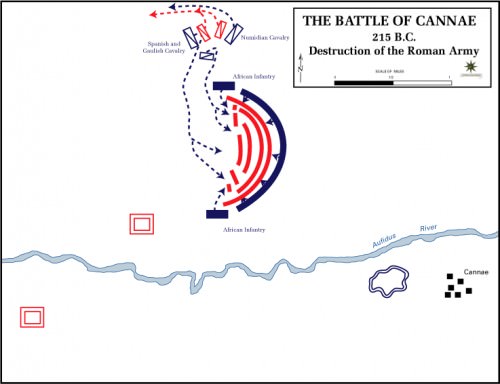
Battle of Cannae - Destruction of the Roman Army
When the Roman legions began their march toward the Carthaginian lines, the Carthaginian infantry fell back before them.The Romans took this as a positive sign that they were winning and pressed on. The Carthaginian light infantry, who had earlier fallen back, now took up position on either end of the crescent formed by their heavy infantry. At this same time the Carthaginian cavalry charged the Roman cavalry and engaged them. The Roman infantry continued their charge into the enemy's ranks but, precisely because of their traditional formation, could make no use of their superior numbers. Those soldiers toward the back of the ranks merely served to push those before them onward. At the same time, the Carthaginian heavy cavalry drove back the Roman cavalry, opening a breach in the lines to the rear of the infantry. As the cavalry forces engaged, and as the Roman infantry continued its advance, Hannibal signaled for the trap to close. The light infantry which formed the ends of the crescent of the Carthaginian line now moved up to form an alley in which the Roman forces found themselves trapped. The Carthaginian cavalry fell upon the Roman infantry from behind, the light infantry attacked from the flanks, and the heavy infantry engaged from the front. The Romans were surrounded and were almost completely annihilated.Out of the over 50,000 who took the field, 44,000 were killed and 10,000 managed to escape to Canusium. Hannibal lost 6,000 men, mostly the Gauls, who had made up the front lines.
THE AFTERMATH
According to Durant, “It was a supreme example of generalship, never bettered in history. It ended the days of Roman reliance upon infantry and set the lines of military tactics for two thousand years” (51). Among those Romans who escaped Cannae was the twenty-year old Publius Cornelius Scipio. Scipio would remember Hannibal's tactics at Cannae and, further, would study his other successful engagements. Fourteen years later, at the Battle of Zama in 202 BCE, Scipio would use Hannibal's own tricks to defeat him and win the Second Punic War. Roman skill on the battlefield, through which they became masters of the world, can be traced directly back to Scipio Africanus and his adaptations of Hannibal's strategies at Cannae.
Battle of Chaeronea › Origins
Definition and Origins
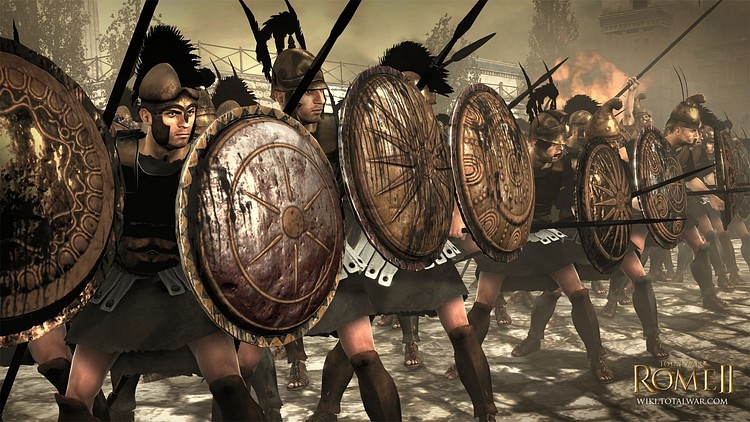
The Battle of Chaeronea took place in 338 BCE on an early August morning outside the town of Chaeronea. Although for centuries the cities of Athens and Sparta dominated Greece, politically, militarily and economically, the Battle of Chaeronea, one of the most renowned of all Greek battles, only involved one of these cities: Athens combined forces with Thebes to meet the rising power of Macedon in a fight that would change history.
Since the time of Homer, the concept of arête and its emphasis on strength and courage symbolized the Greeks in battle.However, in the 4th century BCE a new threat appeared to challenge the dominance of the city -states to the south when Macedon, previously viewed as a land of barbarians, came under the shrewd leadership of Philip II, a man who would completely reshape the Macedonian army. He would prove this new military might at the Battle of Chaeronea; the Macedonian victory at Chaeronea would put Greece into what historian G.Maclean Rogers describes as a deep sleep, both politically and militarily. It would never again regain its supremacy in the Mediterranean.
PHILIP II REBUILDS THE MACEDONIAN ARMY
Philip had inherited a country that was militarily weak. Recognizing this weakness, he rebuilt its fragile army into a strong, fighting machine. This new army was based on the celebrated Sacred Band of Thebes (the elite fighting force of the Theban army) and their equally efficient wedge, a concept that Philip had learned while a captive in Thebes in 367 BCE. Philip II's new army was no longer an army of citizen-soldiers but one of professionals. He reorganized the old, traditional phalanx and replaced the outdated hoplite spear with the sarissa, an 18 to 20 foot pike, adding a smaller double-edged sword or xiphos.Finally, he redesigned the antiquated shield and helmet. It didn't take long for him to reveal to the rest of Greece the might of the Macedonian army, attacking and defeating the Thracians to the north, proving to the people of Athens that Philip was a viable threat.
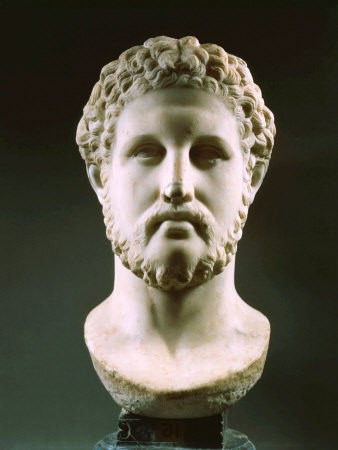
Philip II of Macedon
ATHENS & THEBES JOIN FORCES
Between 352 and 338 BCE, Athens and Philip would remain at odds. Despite an uneasy peace with Macedon - a peace signed after the Social Wars that was uneasy because Philip offered Athens his help, then took control of cities that he wanted for himself after he'd offered them to Athens - Athens could only sit silently, remaining apprehensive about these barbarians to the north. The Athenians were reluctant to fight them alone as they were unable to secure any alliances, and quite honestly, they didn't have the finances. And added to this, Philip's military successes garnered him a seat on the Amphicroyonic Council (an association of Greek city-states) which was a further insult to the Athenians. Although Athens saw Philip as a menace, others viewed him as someone who could unite all of Greece. Meanwhile, Philip increased his hold on Greece by capturing the cities of Crenides in 356 BCE, a city he renamed Philippi ; Methone in 354 BCE; and finally in 348 BCE, Olynthus on the Chalcidice peninsula. These brutal attacks affected Athens when he seized grain shipments headed for the city. These assaults on their food supply caused Athens to seek an ally, eventually turning to their neighbors to the north, Thebes.Although long considered enemies, the two cities now had a common foe: Philip. Athens reminded Thebes that because of their location, Thebes would fall before Athens. Thebes, however, already understood the dangers of Philip, and they looked not south to Athens as an ally but eastward to the Persians, whose dislike for the Macedonian king stemmed from his presence along the northwest coast of Persian-controlled Anatolia.
BY 339 BCE, IT WAS APPARENT THAT A FINAL DECISIVE BATTLE AGAINST PHILIP II COULD NOT BE AVOIDED.
By 339 BCE, it was apparent that a final decisive battle against Philip could not be avoided. One angry Athenian who truly understood this danger to Athens, as well as to the rest of Greece, was Demosthenes. The gifted orator spoke of this threat in a fiery series of speeches called the “Philippics.” It was he who realized the need for securing an ally, namely Thebes.Demosthenes believed the new cities should put aside their differences and fight as one against the Macedonian barbarians.Since many within the Athenian government opposed going to war against Philip, the crafty Demosthenes flattered them by reminding them of their victory against Persia at Marathon. They could easily defeat this barbarian to the north, he claimed.Reluctantly, the Athenians conceded to Demosthenes' wishes.
PRELIMINARIES
Initiating their first line of defense, the Athenian army marched to Boeotia, where they placed men at the most strategic mountain passes (especially at the Gravia Pass north of Amphissa and Parapotamii on the road to Thebes) in an attempt to block Macedonian access to the Gulf of Corinth, which was a source of much needed supplies; the lack of supplies forced Philip to retreat. These mountain passes remained guarded throughout 339 and into 338 BCE and both Athens and Thebes felt safe, until many of those guarding the passes began to grow restless and, further, natural animosity was beginning to cause serious problems. Added to this disparity was a rumor, spread by Philip himself, that the Macedonians were about to withdraw. When Philip withdrew his troops from Cytinium, Greek forces at Amphissa relaxed their guard. Seeing this, Philip immediately seized the opportunity and attacked at night, destroying the defenders of the pass and occupying the city. He then moved further west, capturing the city of Naupaetus. When Philip offered peace, Demosthenes boldly convinced both Athens and Thebes to refuse. War was now unavoidable. The king and his young son Alexander overran the city of Elateia on the Boeatian border; the route to Athens and Thebes was now open. Philip marched his troops southward to confront the enemy on a small plain outside the town of Chaeronea.

Philip II of Macedon's 339 BC Campaign
THE BATTLE BEGINS
The Athenians, Thebans, and a small number of allies positioned themselves, with the Athenians (10,000 infantry and 600 cavalry) on the left, allies in the center, and the Thebans with 800 cavalry and 12,000 infantry (including the 300 members of the Sacred Band) on the far right. Across from Athenians were the Macedonians, with Philip on the far right, totalling 30,000 infantry and 3,000 cavalry. Facing the Thebans was the 18 year old Alexander with the Companion Cavalry. Plutarch, in his Life of Alexander, would write of the young commander's courage, “… he is said to have been the first man that charged the Theban's sacred band…This bravery made Philip so fond of him, that nothing pleased him more than to hear his subjects call himself their general and Alexander their king.” Whether or not Philip actually felt this way or it is simply Plutarch's perception or opinion is unknown.

Battle of Chaeronia
Though not professional soldiers like their Macedonian counterparts, the Athenians took the initiative and attacked first. In a suspicious move, Philip pulled his men backwards, drawing the unsuspecting Athenians in. Quickly, Philip charged into the Athenian center and then veered left, breaking through the enemy line. Seeing defeat imminent, the allies fled. On the Macedonian left, Alexander advanced into the gap left behind by the charging Athenian troops. He was able to surround the Sacred Band, crushing them completely. The remaining Athenians panicked, Demosthenes included, and escaped. When 1,000 Athenians were killed, Philip saw to the burial of the dead and sold the remaining captured troops into slavery.
About the battle, the historian Diodorus wrote,
… they were equal indeed in courage and personal valor, but in numbers and military experience a great advantage lay with the king … About sunrise the two armies arrayed themselves for battle. The king ordered his son Alexander … to lead one wing, though joined to him were some of the best of his generals. Philip himself … led the other wing …. The Athenians drew up their army, leaving one part to the Boeotians, and leading the rest themselves. … the battle was fierce and bloody. It continued long with fearful slaughter, but victory was uncertain, until Alexander, anxious to give his father proof of his valor … was the first to break through the main body of the enemy, directly opposing him, slaying many; and bore down all before him -- and his men, pressing on closely, cut to pieces the lines of the enemy; and after the ground had been piled with the dead, put the wing resisting him in flight. The king, too, at the head of his corps, fought with no less boldness and fury, that the glory of victory might not be attributed to his son. He forced the enemy resisting him also to give ground, and at length completely routed them …. ( Library of History, Bk. XVI, Ch. 14)
THE AFTERMATH
After the battle, Athens was forced into an alliance, while Thebes lost rich agricultural lands in Boeatia. The Athenians may have fought bravely, but the Battle of Chaeronea is viewed by many to be a turning point in history, after which the Greeks were no longer a military or political threat. Philip now turned his military ambitions away from Greece and looked eastward to Persia. Unfortunately, his untimely assassination would leave this achievement to his son, Alexander, who would become known as Alexander the Great.
The Coffin Texts › Origins
Ancient Civilizations
The Coffin Texts (c. 2134-2040 BCE) are 1,185 spells, incantations, and other forms of religious writing inscribed on coffins to help the deceased navigate the afterlife. They include the text known as the Book of Two Ways which is the first example of cosmography in ancient Egypt, providing maps of the afterlife and the best way to avoid dangers on one's way to paradise.Egyptologist Geraldine Pinch notes how "these maps, which were usually painted on the floor of the coffins, are the earliest known maps from any culture" and that the Book of Two Ways "was nothing less than an illustrated guidebook to the afterlife" (15). The Book of Two Ways was not a separate work, nor even a book, but detailed maps which corresponded to the rest of the text painted inside the coffin.

Coffin of Khnumnakht
The texts were derived, in part, from the earlier Pyramid Texts (c. 2400-2300 BCE) and inspired the later work known as The Egyptian Book of the Dead (c. 1550-1070 BCE). They were written primarily during the First Intermediate Period of Egypt(2181-2040 BCE) although there is evidence they began to be composed toward the end of the Old Kingdom (c. 2613-2181 BCE) and would continue through the early Middle Kingdom (2040-1782 BCE). In the time of the New Kingdom (c. 1570-1069 BCE), they would be replaced by the Book of the Dead which would sometimes be included among one's grave goods.
The Coffin Texts are significant on a number of levels but, primarily, because they illustrate the cultural and religious shift between the Old Kingdom and the First Intermediate Period of Egypt and clarify the development of the religious beliefs of the people.
THE OLD KINGDOM & FIRST INTERMEDIATE PERIOD
The Old Kingdom of Egypt is well known as the 'Age of the Pyramid Builders.' King Sneferu (c. 2613-2589 BCE) perfected the art of pyramid building and his son, Khufu (2589-2566 BCE), created the grandest of these with his Great Pyramid at Giza. Khufu was followed by Khafre (2558-2532 BCE) and then Menkaure (2532-2503 BCE), both of whom also erected pyramidsat the site. All three of these monuments were surrounded by complexes which included temples staffed by clergy and, additionally, there was housing for the state workers who labored at the site. Although the pyramids are universally admired in the present day, few are aware of the enormous cost of these monuments.
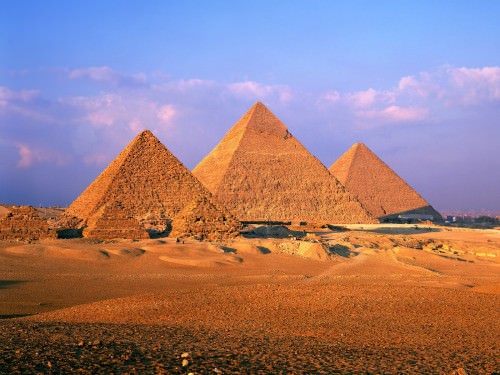
The Pyramids of Giza
Throughout the period of the Old Kingdom, the rulers not only needed to build their own grand tombs but also maintain those of their predecessors. Giza was the royal necropolis of the Old Kingdom monarchs but there was also the pyramid complex at Saqqara, another at Abusir, and others in between. All of these had to be staffed by priests who performed the rituals to honor the dead kings and aid them in their journey in the afterlife.
The priests were given endowments by the king to recite the spells and perform the rituals but, further, were exempt from paying taxes. As the priests owned a great amount of land, this was a significant loss in revenue to the king. During the 5th Dynasty, the king Djedkare Isesi (2414-2375 BCE) decentralized the government and gave more power to the regional governors ( nomarchs ), who were now able to enrich themselves at the central government's expense. These factors contributed to the collapse of the Old Kingdom toward the end of the 6th Dynasty and initiated the First Intermediate Period.
THE COFFIN TEXTS WERE DEVELOPED TO MEET THE NEED OF A NEW UNDERSTANDING OF THE AFTERLIFE & THE COMMON PEOPLE'S PLACE IN IT.
During this era, the old paradigm of a strong king heading a stable central government was replaced by individual nomarchsruling over their separate provinces. The king still was respected and taxes sent to the capital at Memphis, but there was greater autonomy for the nomarchs, and the people generally, than before. This change in the model of government allowed for more freedom of expression in art, architecture, and crafts because there was no longer a state-mandated ideal of how the gods or kings or animals should be represented; each region was free to create any kind of art they pleased.
The change also resulted in a democratization of goods and services. Whereas before only the king could afford certain luxuries, now they were available to lesser nobility, court officials, bureaucrats, and ordinary people. Mass production of goods such as statuary and ceramics began and those who could not have afforded the luxury of a fine tomb with inscriptions during the Old Kingdom now found they could. Just as the king once had his tomb adorned with the Pyramid Texts, now anyone could have the same through the Coffin Texts.
THE DEMOCRATIZATION OF THE AFTERLIFE
The Coffin Texts were developed to meet the need of a new understanding of the afterlife and the common people's place in it.Egyptologist Helen Strudwick explains their purpose:
The texts, a collection of ritual texts, hymns, prayers, and magic spells, which were meant to help the deceased in his journey to the afterlife, originated from the Pyramid Texts, a sequence of mainly obscure spells carved on the internal walls of the pyramids of the Old Kingdom. The Pyramid Texts were exclusively for the king and his family, but the Coffin Texts were used mainly by the nobility and high-ranking officials, and by ordinary people who could afford to have them copied. The Coffin Texts meant that anyone, regardless of rank and with the help of various spells, could now have access to the afterlife. (502)
During the Old Kingdom, only the king was guaranteed continued existence in the next world. Beginning in the First Intermediate Period, however, ordinary individuals were now thought just as worthy of eternal life as royalty. This era has consistently been misrepresented as a time of chaos and strife, but actually, it was a period of enormous cultural and artistic growth. Scholars who claim it was a 'dark age' following a monumental collapse of the government often cite the lack of impressive building projects and the poorer quality of the arts and crafts as proof.
Actually, there were no great pyramids and temples raised simply because there was no money to build them and no strong central government to commission and organize them, and the difference in the quality of crafts is due to the practice of mass production of goods. There is ample evidence during this time of elaborate tombs and beautiful works of art which show how those who were once thought 'common people' now could afford the luxuries of royalty and could also journey on to paradise just as the king was able to.
THE OSIRIS MYTH
The democratization of the afterlife was due largely to the popularity of the myth of Osiris. Osiris was the first-born of the gods after the act of creation, and with his sister-wife Isis he was the first king of Egypt until his murder by his jealous brother Set.Isis was able to bring Osiris back to life, but he was incomplete and so descended to rule in the underworld as Lord and Judge of the Dead.
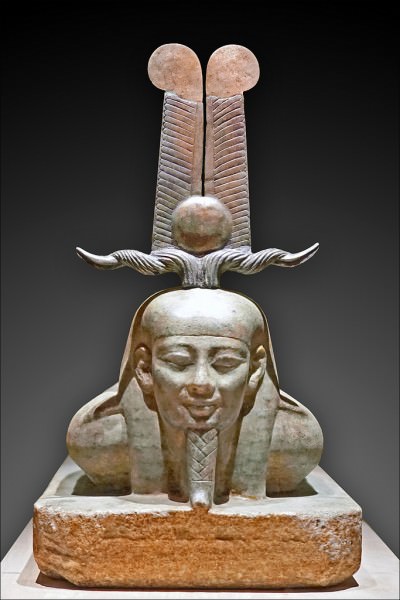
Osiris
The cult of Osiris became increasingly popular during the First Intermediate Period as he was seen as the 'First of the Westerners,' the foremost among the dead, who promised eternal life to those who believed in him. When Isis brought him back from the dead, she enlisted the help of her sister, Nephthys, to chant the magical incantations, and this part of the myth was re-enacted during the festivals of Osiris (and also at funerals) through The Lamentations of Isis and Nephthys, a call-and-response performance of two women playing the parts of the deities to call Osiris to the event. The festival was a ritual re-enactment of the resurrection and anyone attending would spiritually be taking part in this rebirth.
THE SPELLS
The Coffin Text spells and incantations reference many gods (most notably Amun -Ra, Shu, Tefnut, and Thoth ) but draw on the Osiris Myth consistently. Spell 74 ( A Spell for the Revival of Osiris ) re-creates the part of the story in which Isis and Nephthys bring Osiris back to life:
Ah Helpless One!
Ah Helpless One Asleep!
Ah Helpless One in this place
which you know not; yet I know it!
Behold, I have found you lying on your side
the great Listless One.
'Ah, Sister!' says Isis to Nephthys,
'This is our brother,
Come, let us lift up his head,
Come, let us rejoin his bones,
Come, let us reassemble his limbs,
Come, let us put an end to all his woe,
that, as far as we can help, he will weary no more. (Lewis, 46)
Although the words are spoken to Osiris, they were now thought to equally apply to the soul of the deceased. Just as Osiris returned to life through the incantations of the sisters, so would the soul awake after death and continue on to, hopefully, be justified and allowed entrance to paradise.
The soul of the dead participated in Osiris' resurrection because Osiris had been a part of the soul's journey on earth, infused the soul with life, and was also part of the ground, the crops, the river, the home which the person knew in life. Spell 330 states,
Whether I live or die I am Osiris
I enter in and reappear through you
I decay in you
I grow in you...I cover the earth...I am not destroyed" (Lewis, 47).
Empowered by Osiris, the soul could begin its journey through the afterlife. As on any trip to a land one has never visited, however, a map and directions were considered helpful. The Book of Two Ways (so called because it gave two routes, by land and water, to the afterlife) showed maps, rivers, canals, and the best ways to take to avoid the Lake of Fire and other pitfalls in the journey. The path through the underworld was perilous and it would be difficult for a soul, newly arrived, to recognize where to go. The Coffin Texts assured the soul that it could reach its destination safely. Strudwick writes, "Knowledge of the spells and possession of the map meant that the deceased, like the pharaohs in times past, could negotiate the dangers of the underworld and achieve eternal life" (504).

Coffin Decorated with the Book of Two Ways
The soul was expected to have lived a life worthy of continuance, without sin, and to be justified by Osiris. Directions throughout the text assume that the soul will be judged worthy and that it will recognize friends as well as threats. Spell 404 reads:
He (the soul) will arrive at another doorway. He will find the sisterly companions standing there and they will say to him, "Come, we wish to kiss you." And they will cut off the nose and lips of whoever does not know their names. (Lewis, 48)
If the soul failed to recognize Isis and Nephthys, then it clearly had not been justified and so would meet one of a number of possible punishments. Spell 404 references the soul arriving at a doorway and there would be many of these along one's path as well as various deities one would want to avoid or appease.
WRITING & REPLACEMENT
Just as the texts themselves represent the democratization of the afterlife, so do the canvases they were painted on. The large sarcophagi of the Old Kingdom were generally replaced by simpler coffins during the First Intermediate Period. These would be more or less elaborate depending on the wealth and status of the deceased. Egyptologist Rosalie David notes:
The earliest body coffins were made of cartonnage (a kind of papier-mache made from papyrus and gum) or wood but, by the Middle Kingdom, wooden coffins became increasingly commonplace. Later, some body coffins were made of stone or pottery and even (usually for royalty) of gold or silver. (151-152)
Scribes would carefully paint these coffins with the text, including illustrations of the person's life on earth. One of the primary functions of the Pyramid Texts was to remind the king of who he had been while alive and what he had achieved. When his soul woke in the tomb, he would see these images and the accompanying text and be able to recognize himself; this same paradigm was adhered to in the Coffin Texts.
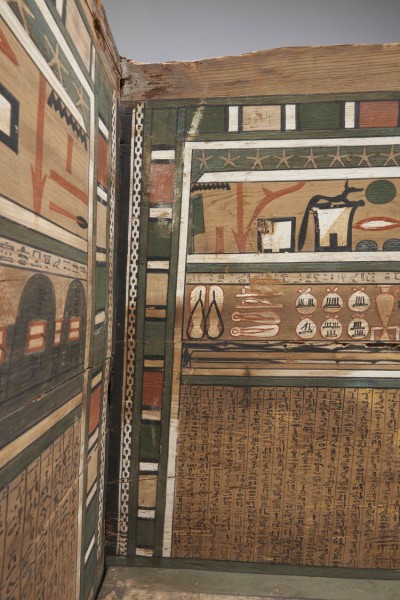
Coffin Texts
Every available space of the coffin was used for the texts but what was written differed from person to person. There were usually, but not always, the illustrations depicting one's life, horizontal friezes of various offerings, vertical text describing the objects needed in the afterlife, and the instructions on how the soul should travel. The texts were written in black ink, but red was used for emphasis or in describing demonic and dangerous forces. Geraldine Pinch describes a part of this journey:
The deceased had to pass through the mysterious region of Rosetau where the body of Osiris lay surrounded by walls of flame. If the deceased man or woman proved worthy, he or she might be granted a new life in paradise.(15)
In later eras, this new life would be granted if one were justified in the Hall of Truth, but when the Coffin Texts were written, it seems one passed through a redeeming fire around Osiris' body. The cult of Osiris became the cult of Isis by the time of the New Kingdom of Egypt and her role as the power behind his resurrection was emphasized. The Egyptian Book of the Deadthen replaced the Coffin Texts as the guide to the afterlife. Although tombs and coffins were still inscribed with spells, The Egyptian Book of the Dead would serve to direct the soul to paradise for the rest of Egypt's history.
LICENSE
Article based on information obtained from these sources:with permission from the Website Ancient History Encyclopedia
Content is available under License Creative Commons: Attribution-NonCommercial-ShareAlike 3.0 Unported. CC-BY-NC-SA License